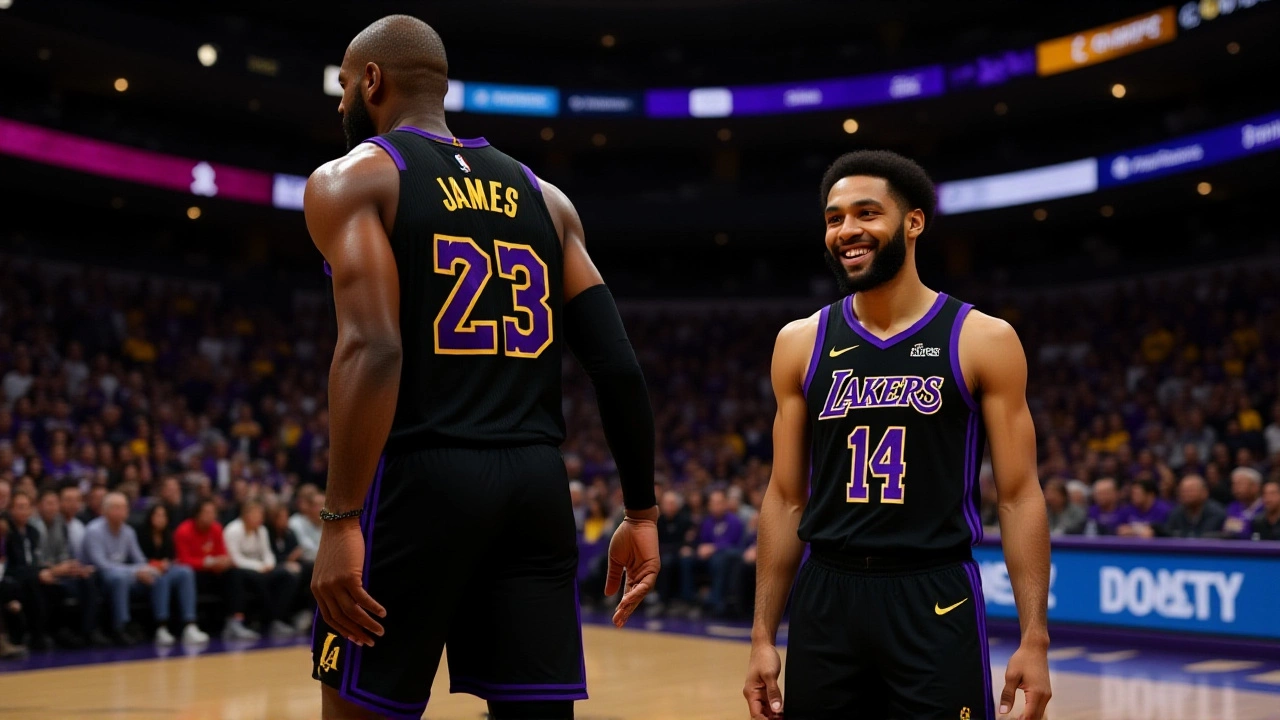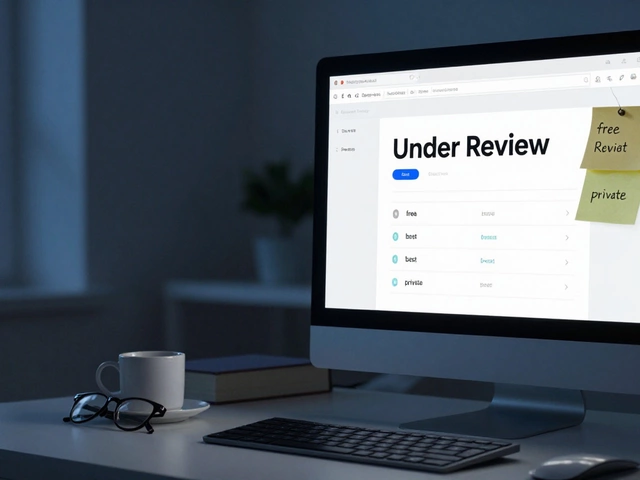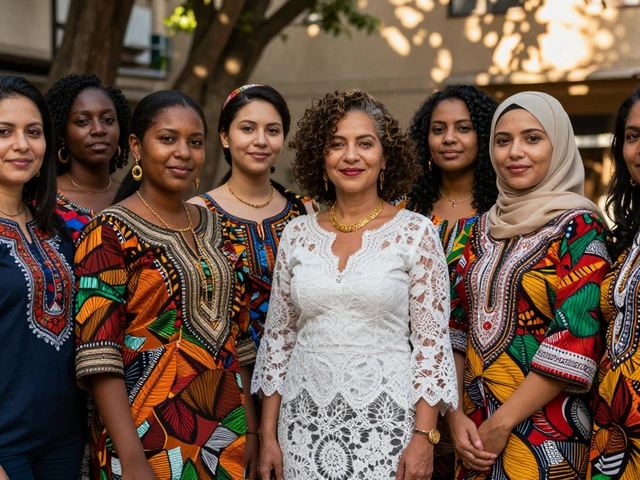When LeBron Raymone James Sr. returned to the court on November 19, 2024, after missing 14 games with sciatica, he didn’t just help the Los Angeles Lakers crush the Utah Jazz 140-126 at Crypto.com Arena—he also dropped a quiet, humanizing bombshell in the postgame scrum. "We don’t talk as much anymore," he joked, referring to his 21-year-old son, Bronny James, who now lives in his own place after moving out of the family home in Los Angeles County. It’s not a rift. It’s just adulthood. And it’s historic.
The First Father-Son Duo in NBA History
The Los Angeles Lakers selected Bronny James with the 55th pick in the 2024 NBA draft on June 26, 2024, at the Barclays Center in Brooklyn. No one had ever seen this before: a father and son on the same active NBA roster. Previous generations had father-son pairs—Gary Payton Sr. and Jr., Dell and Steve Kerr—but never simultaneously on the same team. Even the Los Angeles Lakers, with 17 championships and decades of legends, had never witnessed it.That made the draft pick explosive. Critics, including Stephen A. Smith and Skip Bayless, questioned whether Bronny earned his spot. After all, he averaged just 4.8 points and 2.1 assists in 25 games at the University of Southern California—a solid but unspectacular collegiate career. But the Lakers’ front office, led by Rob Pelinka, insisted Bronny had outperformed others in training camp. His defense, motor, and basketball IQ stood out. Head coach Darvin Ham confirmed it: "He’s earning his minutes. We’re not handing him anything."
Living Apart, Growing Together
LeBron’s comment about their reduced conversations wasn’t a complaint—it was a quiet point of pride. "He’s not a resident anymore," he said, smiling. "He has his own place." That’s the unspoken win here. Bronny didn’t just get drafted. He stepped into adulthood. No more family dinners every night. No more being picked up for practice. He’s managing his own schedule, his own meals, his own mistakes. And that’s exactly what the Lakers hoped for.For LeBron, it’s a rare moment of letting go. He’s been a constant presence in Bronny’s life—from AAU tournaments to his college recruitment. Now, he’s watching from the sideline, not the kitchen table. "It’s been great to see, to watch," LeBron told reporters. "He’s still young. Still learning." But the shift is real. And it’s working.
On the Court: Numbers and Noise
Through 10 games in the 2024-2025 season, Bronny has averaged 11.1 minutes, 2.1 points, and 1.8 assists. He’s shot just 22.7% from three—far below the NBA average—but his defensive rotations and passing vision have impressed coaches. Unlike most second-round picks, he hasn’t been sent to the G League. He’s stayed on the main roster. That’s significant. It means the Lakers believe in his long-term potential, not just his name.LeBron, meanwhile, returned from his sciatica setback on November 19, playing 32 minutes and finishing with 22 points, 7 rebounds, and 6 assists. His presence lifted the team to an 11-4 record. Guard Austin Reaves noted after practice on November 18 that LeBron’s energy had changed the team’s tempo. "He’s got that gravity," Reaves said. "When he’s out there, everyone plays better."
What’s Next?
The next chapter arrives on Friday, November 22, 2024, at 7:30 PM Pacific Time, when the Lakers face the Golden State Warriors at the Chase Center in San Francisco. Both father and son are expected to play. If Bronny gets more minutes, it could signal a turning point—not just for him, but for how the league views legacy picks.The Los Angeles Lakers are no longer just a franchise trying to win another title. They’re a cultural moment. A father and son, side by side, navigating fame, pressure, and the quiet transition from parent-child to teammate-teammate.
Behind the Scenes: The Organization’s Balancing Act
The Lakers’ ownership, led by Jeanie Buss, has stood firmly behind the decision. They’ve quietly countered media noise with internal data: Bronny’s defensive rating improved 12% from USC to training camp. His off-ball movement was rated top 10 among second-round guards. The analytics team, initially skeptical, now sees him as a high-IQ role player.And while some fans still whisper "nepotism," others are rooting harder than ever. Social media buzz around Bronny has surged. Merchandise sales for his jersey jumped 300% after his first start in a preseason game. He’s not just LeBron’s son anymore—he’s becoming his own story.
Frequently Asked Questions
Has any other NBA team ever had a father and son play together?
No. The LeBron and Bronny James duo is the first in NBA history where a father and son have been active teammates on the same roster. While Gary Payton Jr. played for the same franchise as his father, Gary Payton Sr., they never shared the court during the same season. This makes the Lakers’ situation unprecedented.
Why didn’t Bronny James get drafted higher despite his father’s legacy?
Despite his name recognition, Bronny’s collegiate stats were modest: 4.8 points and 2.1 assists per game at USC. Scouts questioned his shooting efficiency and physical projection. He was considered a late-second-round talent at best. The Lakers took him because his intangibles—defensive IQ, leadership, and work ethic—stood out in training camp, not because of his pedigree.
Is Bronny James being treated differently than other second-round picks?
Yes—by default. He’s the only second-round pick in NBA history with his father on the same team. That means more media scrutiny, more pressure, and more visibility. But the Lakers have kept him off the G League, which is rare. Most second-rounders get sent down to develop. Bronny hasn’t been, suggesting the team believes he’s ready for the NBA stage.
How has LeBron James’ return impacted Bronny’s playing time?
LeBron’s return hasn’t reduced Bronny’s minutes—yet. In fact, Bronny played 14 minutes against the Jazz, his second-highest of the season. With LeBron drawing defensive attention, Bronny has more space to operate. Coaches are using him as a secondary playmaker in transition, a role that thrives when LeBron commands the ball. Their chemistry on the floor is growing.
What’s the long-term outlook for Bronny James in the NBA?
He’s not projected to be a star, but he could become a valuable 3-and-D guard—someone who defends multiple positions and hits open threes. His shooting needs work (currently 22.7%), but his footwork and IQ suggest he can improve. If he develops into a 35% three-point shooter with elite off-ball movement, he could be a rotation staple for years, even after LeBron retires.
Why does this matter beyond basketball?
This isn’t just about basketball—it’s about legacy, independence, and generational transition. Bronny isn’t riding his dad’s coattails; he’s walking beside him, on his own terms. For millions of young athletes, it’s a powerful example: you can come from greatness, but you still have to earn your place. That’s the real story.



